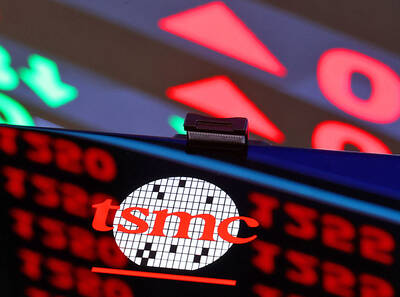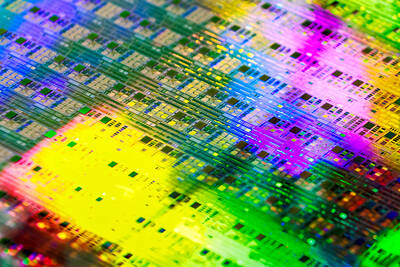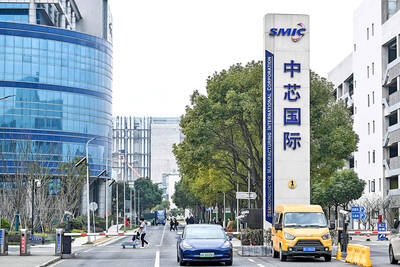TaiGen Biotechnology Co (太景生技) yesterday announced that it had signed an agreement with China-based Zhejiang Medicine Co (浙江醫藥) that gives the latter exclusive rights to manufacture and commercialize nemonoxacin in China, excluding Hong Kong and Macau.
Nemonoxacin is a novel broad-spectrum non-fluorinated quinolone antibiotic under development for respiratory infections.
Under the terms of the agreement, TaiGen will be responsible for completing the phase 3 clinical trial for community-acquired pneumonia (CAP) in China.
Zhejiang Medicine will be responsible for the manufacturing, sales and marketing of nemonoxacin in China through its wholly owned subsidiary, Xinchang Pharmaceuticals Co (新昌製藥). TaiGen will retain full development and commercialization rights outside the licensed territory including Taiwan, the US, the EU and Japan.
The Taiwanese biotechnology company will receive an upfront payment of US$8 million from Zhejiang Medicine and will receive additional milestones, as well as between 7 and 11 percent of royalties on product sales. The term of the agreement is 20 years.
“Nemonoxacin has demonstrated efficacy and safety in CAP and diabetic foot infection in clinical trials,” TaiGen chairwoman and chief executive officer Hsu Ming-chu (許明珠) told a press conference in Taipei.
“In particular, nemonoxacin has excellent efficacy against drug-resistant bacteria, such as methicillin-resistant Staphylococcus aureus (MRSA) and quinolone-resistant MRSA. Nemonoxacin is taken once a day and available in both oral and intravenous formulations,” she said.
TaiGen is completing a phase 3 CAP trial with more than 500 patients from Taiwan and China, and the company expects to file new drug applications in Taiwan and China simultaneously early next year.
According to healthcare information, services and technology provider IMS Health Inc, the global sales of antibiotics amounted to approximately US$11 billion last year and account for almost 20 percent of total pharmaceuticals sales.
The rate of antibiotic-resistant infections in China is among the highest in the world.
According to IMS, global sales of nemonoxacin for CAP and diabetic foot infection could reach US$1.2 billion a year, Hsu said.
She added that TaiGen chose Zhejiang Medicine Co as a partner because it was a first-class pharmaceutical company in China, with a strong antibiotics-marketing team.
“China is the world’s fastest-growing pharmaceutical market. It is poised to overtake Japan as the second-largest pharmaceutical market,” Hsu said. “This partnership will not only set a new record for pharmaceutical licensing involving a Taiwanese and a Chinese company, but hopefully will also become a model for future collaborations.”
“With the conclusion of the partnership in China, we will actively pursue nemonoxacin licensing discussions in other territories, such as the European Union,” Hsu said.
TaiGen currently has Burixafor for stem cell mobilization and TG-2349, a HCV NS3-4A Protease Inhibitor, under phase 2 and phase 1 clinical trials respectively, which will be the company’s focus after nemonoxacin, Hsu added.
Meanwhile, Academia Sinica President Wong Chi-huey (翁啟惠) said yesterday that Taiwan should step up its efforts to expand cooperation with China in clinical research, after the two sides concluded a medical cooperation agreement in December 2010.
Citing Taiwan’s strength in research on diseases that affect only ethnic Chinese, Wong said that clinical trial programs carried out in conjunction with Chinese researchers would further benefit medical research in the field. He made the remark on the second day of a four-day forum to review Taiwan’s policies on the biotech industry.
Additional reporting by CNA

SEMICONDUCTOR SERVICES: A company executive said that Taiwanese firms must think about how to participate in global supply chains and lift their competitiveness Taiwan Semiconductor Manufacturing Co (TSMC, 台積電) yesterday said it expects to launch its first multifunctional service center in Pingtung County in the middle of 2027, in a bid to foster a resilient high-tech facility construction ecosystem. TSMC broached the idea of creating a center two or three years ago when it started building new manufacturing capacity in the US and Japan, the company said. The center, dubbed an “ecosystem park,” would assist local manufacturing facility construction partners to upgrade their capabilities and secure more deals from other global chipmakers such as Intel Corp, Micron Technology Inc and Infineon Technologies AG, TSMC said. It

NO BREAKTHROUGH? More substantial ‘deliverables,’ such as tariff reductions, would likely be saved for a meeting between Trump and Xi later this year, a trade expert said China launched two probes targeting the US semiconductor sector on Saturday ahead of talks between the two nations in Spain this week on trade, national security and the ownership of social media platform TikTok. China’s Ministry of Commerce announced an anti-dumping investigation into certain analog integrated circuits (ICs) imported from the US. The investigation is to target some commodity interface ICs and gate driver ICs, which are commonly made by US companies such as Texas Instruments Inc and ON Semiconductor Corp. The ministry also announced an anti-discrimination probe into US measures against China’s chip sector. US measures such as export curbs and tariffs

The US on Friday penalized two Chinese firms that acquired US chipmaking equipment for China’s top chipmaker, Semiconductor Manufacturing International Corp (SMIC, 中芯國際), including them among 32 entities that were added to the US Department of Commerce’s restricted trade list, a US government posting showed. Twenty-three of the 32 are in China. GMC Semiconductor Technology (Wuxi) Co (吉姆西半導體科技) and Jicun Semiconductor Technology (Shanghai) Co (吉存半導體科技) were placed on the list, formally known as the Entity List, for acquiring equipment for SMIC Northern Integrated Circuit Manufacturing (Beijing) Corp (中芯北方積體電路) and Semiconductor Manufacturing International (Beijing) Corp (中芯北京), the US Federal Register posting said. The

India’s ban of online money-based games could drive addicts to unregulated apps and offshore platforms that pose new financial and social risks, fantasy-sports gaming experts say. Indian Prime Minister Narendra Modi’s government banned real-money online games late last month, citing financial losses and addiction, leading to a shutdown of many apps offering paid fantasy cricket, rummy and poker games. “Many will move to offshore platforms, because of the addictive nature — they will find alternate means to get that dopamine hit,” said Viren Hemrajani, a Mumbai-based fantasy cricket analyst. “It [also] leads to fraud and scams, because everything is now